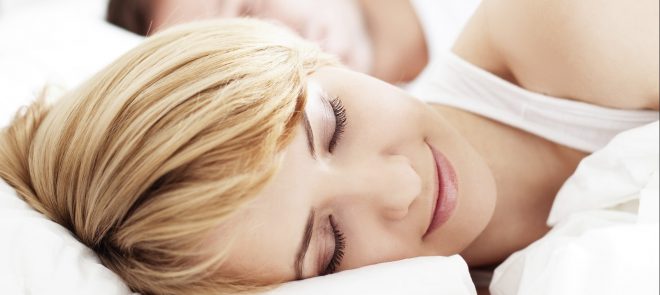![]()
Clinic News
In this issue we talk about how to beat winter exhaustion, eating better for bone and joint health, more about how to get a better nights sleep and ladies take up our Bra challenge this month – 70% of women have the wrong bra size and this could be giving rise to back pain!
It was great to take some time out with the whole team and refresh out first aid skills with Eric from The St John Ambulance Service. Although as a clinic we have voluntarily kept up our skills over the last 12 years, it has now become a compulsory part of our chiropractic registration. We can't believe it is now two years since we raised the money for our defibrillator. Eric was very impressed in that we have one here outside the clinic for our community. If a defibrillator is used within 3-5 minutes of cardiac arrest, survival rates jump from 6 per cent to 74 per cent.
We start March with Lucy joining the clinic full time which means that Alex and Troy will be resuming normal hours - it's been a long six months for them both and although Alex feels it’s a little strange to actually be home with the family more, the start of Troy's and Lucy's Post Registration Training (PRT) programmes will be keeping her on her toes. This will involve some observations sessions with Alex while they are both working. PRT helps ensure a smooth transition from the undergraduate setting to autonomous professional practice in the clinical setting and is designed to be helpful and supportive. As Troy completed the first half of hers while working in Scotland, she will complete within the next six months. Lucy as a new graduate will take about a year to complete hers. We wish them both success in achieving them.
Last month we asked you to share your chiropractic journey – thank you to KM for her contribution – don’t forget to send yours in by email to alex@beestonchiropractic.co.uk
I've been attending Beeston Chiropractic for 16 years. I was working part-time and taking care of my daughter and had noticed that I was struggling to run. I hadn't been doing enough walking as I seemed to always be in the car. A work colleague noticed that I wasn't walking properly and suggested I call Beeston Chiropractic Clinic. It transpired from my assessment that my pelvis had seized up (not the technical term I'm sure!) and it was recommended that I have weekly treatment for a month or so. I did this and regained my mobility, and some useful exercises to do, which I STILL do when my hips ache. And of course I still attend the chiropractic clinic every 10-12 weeks to keep me aligned, especially as I have back and shoulder aches due to a lifetime of desk-based work. I find it reassuring to know that when I am suffering aches I always have a chiropractic appointment coming up to solve my problems. Chiropractors I have seen in my years are Kate Simpson, Gilly Simpson, Sophie and Alex. KM
Don’t forget to check out the podcast where Alex has secured a regular lunch time slot now at BBC Radio Nottingham from1pm with Alan Clifford talking about every day issues so tune in on Tuesday 17th March from 12 noon or catch up via this link: http://www.beestonchiropractic.co.uk/podcasts/

The Bra That Makes All the Difference
Approximately 8 out of 10 women are wearing the wrong size bra, and their back and posture might be suffering from it. Bras acts like suspension bridges, as they lift, support and shape the breast, as well as influencing overall posture. With 70% of UK women suffering from back pain and 47% blaming the pain and poor posture on their breast size, it is crucial to purchase a bra that is correct in size and shape. Bras that don’t fit will affects the shoulders and chest and may cause back pain as ageing occurs. Getting a fitting every 6-months and during/after pregnancy, menopause or weight fluctuations will ensure the breast is supported at all times and reduce the possibility of back pain.
Back pain and poor posture are just two of many other negative effects of wearing the wrong size bra. Here are some health consequences of wearing the wrong size bra and some tips on how to check for the right fit.
- Neck, Back and Shoulder Pain
Larger breast sizes frequently correlate to higher risk of back pain. Larger cup sized bras are usually designed with thicker straps, to disperse the weight across the shoulders and prevent chafing. If the cup, band or straps size is incorrect, it can cause strain on the shoulders and hunching of the back, which can result in severe pain.
Tip: When shopping for bras, make sure that the band sits parallel to the floor without it riding up and that only two fingers of room are left at the back. The straps should be snug but not digging into or falling off the shoulders. The breast should be comfortably sitting and filling the cups without spilling over or the fabric creasing.
- Bad Posture
The negative effect on posture comes as a result of the shoulders and neck position used to alleviate the pain caused by a non-supportive bra. A non-supportive bra can cause pain and a result hunching of the shoulders and upper back to help alleviate that pain. While hunching of the shoulders will soothe the pain, prolonged hunching will ruin the natural posture and cause more issues later on.
- Skin Abrasions
The rubbing of too small or too tight bras on shoulders and under the breast can cause blisters and calluses to form. Small bras can also cause breast pain and the blockage of lymph nodes. Lymphatic vessels are very thin and sensible to pressure and compression. Excessive and sustained pressure on the breast can cause the failure of the lymph nodes.
Tip: Test the bra fit and tightness by looking at the movement of the band. Raise the hands above the head, if the band rises the bra is too big; while if it feels uncomfortably tight it might be too small.
- Sagging of Breasts
Loose-fitting bras fail to lift and support the breast, causing premature stretching and sagging of the breast tissue. These further aggravates hunching and ultimately the posture.
Finding the right bra can be a difficult mission. When choosing between different styles, shapes and brands, it’s hard to come up with one perfect size. The solution is to be open to trying different sizes, styles and brands, and get fitted every six months until the perfect fit is found.

How to Beat Winter Exhaustion?
The nights are still long, temperatures have plummeted and flu season is very much upon us. From shorter days with less sunlight, changes in hormones and potential nutritional deficiencies, there are so many factors that can contribute to feeling of exhaustion at this time of the year. But here are a few simple ways to put the spring back into your step!
Move more, yawn less
Regular low-intensity workouts help boost energy levels in people suffering from fatigue. In a study, subjects trying low-intensity exercise, like leisurely walking or bike riding, reported the biggest drop in feelings of fatigue compared to the group doing more intense exercise. You should keep moving and ensure you continue exercising regularly, as the endorphins released during activity will help give you a much-needed lift. Regular exercising should also help you achieve a better night’s sleep so you feel more energised in the morning.
Multiple studies have shown that regular exercise strengthens your immune system, so it can fight off bacterial and viral infections. When you exercise and get your blood pumping, immune cells circulate through your body more quickly, helping them to seek and destroy infections. This boost only lasts for a few hours, which is why it’s good to exercise consistently.
Let the light in
February is the worst month for sleep. Research found that it takes longer to nod off in February than any other month. This can certainly be a contributing factor towards people reporting lower energy levels in February than any other month of the year. Aim to go to sleep and wake up at the same hour every day, so you get a good length of rest. Avoid sleeping too much at the weekends, because it might result in you actually feeling even more tired and sluggish.
Check your room temperature, too. If it is too high, it can make you feel like you didn’t get enough sleep, even when you have slept a proper amount of hours. And if it’s too cold you might wake up several times during the night. Sleep experts recommend bedroom temperatures to be between 20-22C degrees. Even if you are sleeping well, you may experience fatigue as a result of increased levels of melatonin, because of lack of exposure to sunlight. To help regulate your melatonin levels, spend as much time outdoors in daylight as you can – take a walk at lunchtime, or make sure the blinds are open if you sit near a window at work.
Boost from within
For most of us, the colder it gets, the more we crave carbs. It’s true that if we’re shivering, we burn more energy to keep warm, but as we spend most of our time in heated environments, most of us don’t need the extra calories. Comforting drinks and foods are often higher in fat, carbohydrates, and added sugars, and they can have a detrimental impact on energy levels, which can end up making you feel worse. Swap in healthier alternatives, like sweet potato, lentils, veggie soups and porridge. It’s also important to include a vitamin D supplement in your diet as our bodies are unable to create enough at this time of year. Food sources such as eggs, oily fish, spreads and fortified cereals are helpful to include in your diet, but a good quality vitamin D3 supplement is more effective. Nutritional deficiencies can cause low energy levels and exhaustion.
https://www.sciencedaily.com/releases/2008/02/080228112008.htm https://www.health.harvard.edu/staying-healthy/how-to-boost-your-immune-system https://medlineplus.gov/ency/article/007165.htmhttps://www.pri.org/stories/2013-02-07/february-worst-month-sleep-study-says

Are your sleeping habits causing you pain?
The way you sleep could be causing you unnecessary aches and pains. We are told time after time that we should be sleeping flat on our backs, but many of us have already developed habitual sleeping patterns, which are hard to get out of. However, if you suffer from neck or shoulder stiffness, muscle tension or more commonly back pain, you might want to think twice about curling up into a ball next time you reach for the sheets.
Why do I wake up in pain?
Incorrect alignment and poor support of your spine and limbs will put pressure on different areas of the body, which is why you may sometimes wake up with pain or discomfort.
Why is it so important to look after my spine?
Your spine also plays a huge role in sending nerve signals around the body; delicate nerve tissues help control your critical organs, so any damage to these tissues can lead to problems affecting impairment in balance, vision, temperature regulation, digestion and hormonal regulation problems.

Sleeping tips:
- Refrain from sleeping on your stomach as this causes your spine to arch unnaturally and usually results in both back and neck stiffness
- Laying on your back or side is the ideal position, however to perfect your alignment try to use an orthopaedic pillow to give your neck adequate support
- If you sleep on your side, consider placing a pillow in-between your knees for support to prevent your back and pelvis from twisting
- If you sleep on your back, consider placing a pillow under your knees to take the tension off your lower back
- Acknowledging and correcting your posture throughout the day will help you find ease when it comes to sleep
What if the pain persists?
Importantly, remember that poor quality sleep can be caused by an underlying neck or back problem causing increased muscle tension. So if you are experiencing poor sleep, see a chiropractor to have your neck and back checked.


Nutrition for Bones, Muscles and Joints
Choosing a balanced diet containing the right vitamins and minerals decreases our chances of developing deficiencies later on in life. The body’s structure relies on vitamins and minerals to ensure muscle tone (including the heart), healthy functioning of nerves; correct composition of body fluids; and the formation of healthy blood and bones.
A Healthy Diet Plan
Calcium
For bone, muscle and joint health try and include Calcium in your diet, which is essential for optimal nerve and muscle function and blood clotting.
Obtained from
Dairy products are rich in calcium that is easy to absorb. Non – dairy sources with equally absorbable calcium are green leafy vegetables from the kale family. Spinach, rhubarb, sweet potatoes and dried beans are rich in calcium but from these foods it’s not easily absorbed
Magnesium
Required for efficient muscle contraction and conduction of nerve impulses. Low magnesium levels in the body can affect the body’s calcium levels, putting bone health at risk.
Obtained from
Green leafy vegetables, unrefined grains and nuts. Small amounts are present in meat and milk. Large quantities of fibre in the diet and low protein intake can reduce the amount of magnesium able to be absorbed by the body.
Vitamin D
Essential for regulating the formation of bone and the absorption of calcium from the intestine. Vitamin D is a fat-soluble vitamin that functions to help control the movement of calcium between bone and blood.
Obtained from
Primarily from the action of UVB light on the skin. Food sources such as cod liver oil, sardines, salmon, tuna, milk and milk products contain small amounts of Vitamin D.
Vitamin C
The structure of bones, cartilage, muscles and blood vessels is provided in part and maintained by collagen. The formation of strong efficient collagen requires Vitamin C.
Obtained from
Citrus fruits, berries, tomatoes, cauliflower, potatoes, green leafy vegetable and peppers. Also important for producing strong collagen and therefore strong bone structure, is Folic acid. Folic acid is found in cereals, beans, green leafy vegetables, orange and orange juice
Antioxidants
Vitamin C is also a strong antioxidant and is capable of regenerating other antioxidants like vitamin E. The role of antioxidants is to mop up free radicals (the by-products of normal metabolism). Excessive amounts of free radicals cause damage to joint surfaces and muscle cell regeneration. Antioxidants reduce the potential of these free radicals to cause joint damage.
Obtained from
Antioxidants are vitamins A, C, E and the mineral selenium and are present in fruits and vegetables, the highest quantities are found in the most deeply and brightly coloured. Cartilage that lines the articulating surfaces of all joints is critical to joint health. Cartilage is the shock absorber of joints and is continually rebuilt if a source of raw materials is available. Supplements such as glucosamine sulphate can be added to a healthy diet to assist joints that maybe showing signs of wear and tear.
Essential fatty acids
Essential fatty acids (EFA’s) also reduce the degenerative changes in tissues and cells. EFA’s are unsaturated fatty acids such as Omega 3. They aid in decreasing the inflammatory response and help relieve pain and discomfort in joints and muscles.
Obtained from
EFA’s can be found in oily fish (sardines, fresh tuna, mackerel), flax seed and linseed.
Foods to avoid…
There are certain foods and substances that adversely effect the body’s use of minerals and vitamins. High saturated/animal fats, refined foods, white flour, white sugar, white rice, chocolate, carbonated drinks and fruit juices with high sugar concentration should be kept to a minimum if not weaned from the diet completely. Meat and dairy products should be kept within a recommended weekly amount. Dairy products as calcium sources should be varied with other non-dairy sources.
We treat all conditions that affect any muscle or joint in your body, from your head to your little toe! One of the most common complaints that we treat is back pain and Chiropractic is recommended by the government authority, the National Institute for Clinical Excellence (NICE) for acute and chronic back pain. Some of the other conditions that we treat are neck and headache, shoulder pain, leg and hip pain, knee and foot pain, sciatica and arthritis. Our registered Chiropractors all have at least five years of training. Treatment costs can be covered through most health insurers. If you are in any doubt, we are always very happy to talk with you on the phone to see if your condition will respond well to Chiropractic treatment. Call the clinic now to arrange an appointment time that works for you. 0115 9225085 If you would like to opt-out of receiving these newsletters please follow the unsubscribe link below, email alex@beestonchiropractic.co.uk or let us know at your next appointment.







